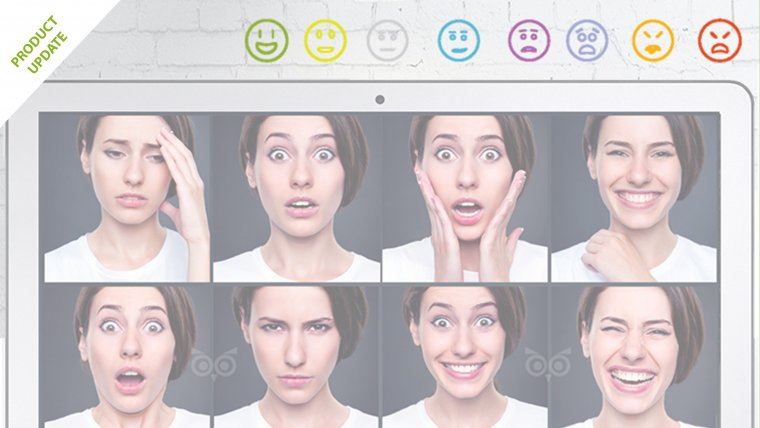CoolTool Blog

Try In Action: “Emotions in Browser” Tool, Fully Integrated Into Professional Survey
In NeuroLab by CoolTool, the emotion measurement tool was always integrated directly into a professional survey, enabling researchers to obtain better insights and now you can measure emotions in browser as well.
What does it mean?
This ability to measure emotions in the browser has two major advantages:
1. You don’t need an application to measure emotions (only a webcam)
2. You can carry out emotion measurement using mobile devices.
Conduct emotion measurement tests twice as fast without an application: just create a survey, upload the required materials and proceed to data collecting.
The only requirement which respondents should meet – having their device (laptop or smartphone) equipped with a camera. You can get access to respondents and measure their emotions during the testing just by sending a link for the survey directly to:
• e-mails of respondents/customers (you can upload your own contact list to the system);
• members of respondents’ panels;
• subscribers in social media.
What are the main benefits for respondents, agencies, and clients?
For respondents: they can complete tests from both a mobile device or a laptop wherever they want.
For agencies: it’s easier to reach out to respondents as well as collect the data faster, as there is no need for them to install the application.
For clients: benefit from more accurate research data, as respondents complete surveys not in laboratories but in settings which are ordinary for them – in places where they come across standard advertising as well.
Furthermore, this technology is currently free of charge for you. No Neurolab credits (conventional units of accounting for the number of projects implemented with the application of neuromarketing technologies) will be charged from your CoolTool account. Emotion measurement via Neurolab app will be also available and relevant fees will be charged in accordance with your subscription plan.
How does it work?
Currently, this tool is compatible with the following internet browsers: Chrome, Opera, Microsoft Edge, and Firefox.
We guarantee the high quality of the collected data if you follow a number of simple rules:
• have a functioning camera (integrated into the device, or any other web camera connected to the computer);
• the premises where the test is conducted should be well-lit, but no direct sunshine should penetrate the test area;
• the face of the respondent should be located in the center of the frame.
Our developers will continue working in this direction, aiming at presenting a full-fledged eye tracking tool for browsers in the nearest future.


